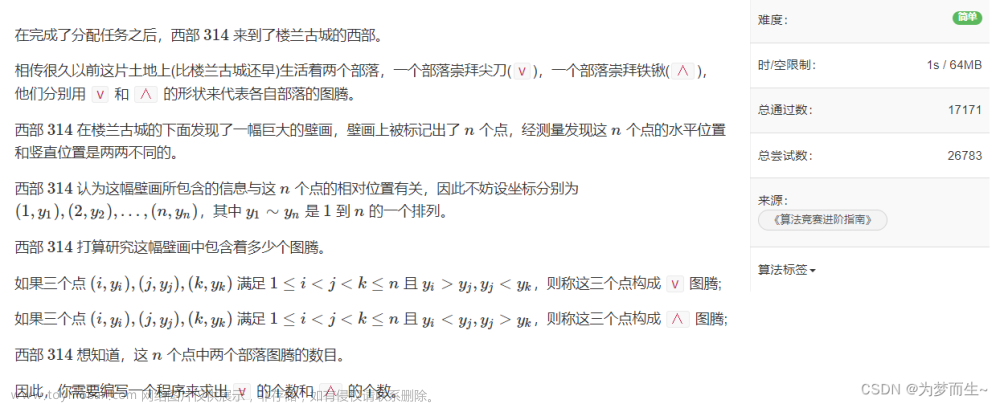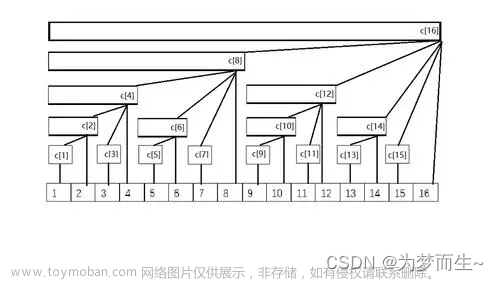前言
最近做了一个中医药方面的项目,该项目分为游戏端和服务端。笔者负责的是服务端的开发。在服务端的业务中包含两部分:系统信息管理模块、游戏端服务提供模块。由于中医药存在很多树状结构信息,因此在设计数据表时为了减少冗余度,就将很多数据表设计为了树状结构。树状结构的表能够更加有效的将数据进行管理,但在某些业务中存在查询某个节点所有子节点后父节点的需求,进而造成了查询效率低下。并且对于不同数据表而言,其字段均不相同,代码并不能复用。使得在开发过程中,存在大量重复性工作。笔者想,既然数据表都存在树状结构是否能写一个东西,能够对所有树状结构的数据表都能适用,并提高其查询效率。经过构思找到了一个实现思路。
在很多项目中都存在树状结构的数据库,以表示数据间的关联和层次关系。这种数据库能够高效的描述数据间的关系,而且可以无限延申树状结构的深度。该树状结构的思想能够在数据库层面高效的解决数据存储问题,但在业务处理层面并不能高效的解决节点间父子节点的关系。因此,产生了数据库树状查询问题。对于不同的数据库有不同的解决方式:
-
Oracle数据库中存在树查询语句,可以直接查询出某个节点的所有父节点或子节点。
-
MySQL数据库中并没有Oracle数据库中的树查询语句,其解决思路大致可分为两种:
- 方法一:将数据库中所有的数据一次性全部查询出来,而后在代码层面获取节点的父、子节点
- 方法二:在代码层面以某个节点的唯一标识在代码层面进行递归,每次递归从数据库中查询树父、子节点
在MySQL中方法二由于与数据库进行了多次交互,而与数据库的交互所花费的时间要远远大于代码层面所花费的时间,方法一与数据库只进行一次交互,因此该方法效率比方法二高。
笔者基于方法一对该方法提高了该方法的复用性。方法一在解决树状查询时,通常是仅仅针对特定的一张表而言的,无法通用的解决MySQL树状查询问题,本方法在其基础上通用的解决了MySQL树状查询问题。即是凡是存在树状结构的数据表均可使用本方式进行树状查询。
一、数据准备
CREATE table arborescence (
id int PRIMARY KEY,
parent_id int,
content VARCHAR(200)
);
INSERT INTO `arborescence`(`id`, `parent_id`, `content`) VALUES (1, NULL, '节点1');
INSERT INTO `arborescence`(`id`, `parent_id`, `content`) VALUES (2, 1, '节点2');
INSERT INTO `arborescence`(`id`, `parent_id`, `content`) VALUES (3, 1, '节点3');
INSERT INTO `arborescence`(`id`, `parent_id`, `content`) VALUES (4, 2, '节点4');
INSERT INTO `arborescence`(`id`, `parent_id`, `content`) VALUES (5, 2, '节点5');
INSERT INTO `arborescence`(`id`, `parent_id`, `content`) VALUES (6, 2, '节点6');
INSERT INTO `arborescence`(`id`, `parent_id`, `content`) VALUES (7, 3, '节点7');
INSERT INTO `arborescence`(`id`, `parent_id`, `content`) VALUES (8, 3, '节点8');
INSERT INTO `arborescence`(`id`, `parent_id`, `content`) VALUES (9, 3, '节点9');
INSERT INTO `arborescence`(`id`, `parent_id`, `content`) VALUES (10, 4, '节点10');
INSERT INTO `arborescence`(`id`, `parent_id`, `content`) VALUES (11, 6, '节点11');
INSERT INTO `arborescence`(`id`, `parent_id`, `content`) VALUES (12, 7, '节点12');
INSERT INTO `arborescence`(`id`, `parent_id`, `content`) VALUES (13, 8, '节点13');
INSERT INTO `arborescence`(`id`, `parent_id`, `content`) VALUES (14, 8, '节点14');
INSERT INTO `arborescence`(`id`, `parent_id`, `content`) VALUES (15, 9, '节点15');
INSERT INTO `arborescence`(`id`, `parent_id`, `content`) VALUES (16, 15, '节点16');
在该数据表中
id为每个数据记录的唯一标识,parent_id为每个数据记录的父级记录。
以上数据的树状结构关系如图:

二、代码实现
在本方法中主要由两个类实现。
public class Tree <T>{
T node;//当前节点
List<Tree<T>> nextNode;//子节点
public Tree(T node, List<Tree<T>> nextNode) {//有参构造
this.node = node;
this.nextNode = nextNode;
}
public Tree() {//无参构造
}
public Tree(T node) {
this.node = node;
this.nextNode=new ArrayList<>();
}
public T getNode() {
return node;
}
public void setNode(T node) {
this.node = node;
}
public List<Tree<T>> getNextNode() {
return nextNode;
}
public void setNextNode(List<Tree<T>> nextNode) {
this.nextNode = nextNode;
}
}
Tree<T>类与常用的树状节点功能相同,记录当前节点及其直接子节点。主要关键点是使用到了泛型,从而保证了本方法的通用性。
public class TreeUtil <T>{
public List<T> sonList,fatherList;//所有子节点、所有父节点
public Tree<T> tree;//树
public List<T> getSonList() {
return sonList;
}
public void setSonList(List<T> sonList) {
this.sonList = sonList;
}
public List<T> getFatherList() {
return fatherList;
}
public void setFatherList(List<T> fatherList) {
this.fatherList = fatherList;
}
public Tree<T> getTree() {
return tree;
}
public void setTree(Tree<T> tree) {
this.tree = tree;
}
public TreeUtil() {
this.sonList = new ArrayList<>();
this.fatherList=new ArrayList<>();
this.tree=new Tree<>();
}
/**
* 根据制定字段建立树和对应后代节点集合
* @param list 所有节点
* @param head 对象类型
* @param fatherFiled 父节点字段
* @param sonFiled 当前节点字段
* @param start 起始字段的值
*/
public void buildListAndTree(List<T> list,Class head,String fatherFiled,String sonFiled,String start) {//根据某个节点建树和集合
Map<String,T> sonMap=new HashMap<>();//以自身唯一标识建map
Map<String,List<T>> fatherMap=new HashMap<>();//以父节点唯一标识建map
for (T temp:list) {
try {
Field field1 = head.getDeclaredField(sonFiled);//自身唯一标识
field1.setAccessible(true);
Object o1 = field1.get(temp);
sonMap.put(o1.toString(),temp);
Field field2 = head.getDeclaredField(fatherFiled);//父节点唯一标识
field2.setAccessible(true);
Object o2 = field2.get(temp);
if (o2==null) continue;//该节点为根节点不存在父节点
if (fatherMap.containsKey(o2.toString())) {//已经含有该父节点
List<T> ts = fatherMap.get(o2.toString());
ts.add(temp);
}else {//不含该父节点
List<T> tempList=new ArrayList<>();
tempList.add(temp);
fatherMap.put(o2.toString(),tempList);
}
} catch (Exception e) {
e.printStackTrace();
}
}
if (sonMap.containsKey(start)) {
T startNode = sonMap.get(start);//起始节点
this.sonList = buildSonList(fatherMap,startNode,sonFiled,head);//建子节点
this.fatherList=buildFatherList(sonMap,startNode,head,fatherFiled);//建父节点
this.tree=buildTree(fatherMap,startNode,head,sonFiled);//建树
}
}
/**
* 根据指定节点获得该节点的所有子节点
* @param fatherMap 父节点唯一标识
* @param startNode 起始节点
* @param sonFiled 当前节点唯一标识属性
* @param head 类
* @return
*/
private List<T> buildSonList(Map<String,List<T>> fatherMap, T startNode, String sonFiled, Class head){//建集合
List<T> result=new ArrayList<>();
Queue<T> queue=new LinkedList<>();
queue.add(startNode);//队列
while (!queue.isEmpty()) {
T curNode = queue.poll();
try {
Field field = head.getDeclaredField(sonFiled);
field.setAccessible(true);
Object o = field.get(curNode);
if (fatherMap.containsKey(o.toString())) {
List<T> sons = fatherMap.get(o.toString());//当前节点所有子节点
queue.addAll(sons);
}
result.add(curNode);
} catch (Exception e) {
e.printStackTrace();
}
}
return result;
}
/**
* 根据起始节点获得所有父节点
* @param sonMap 节点集
* @param startNode 起始节点
* @param head 类
* @param fatherFiled 父节点唯一标识属性
* @return
*/
private List<T> buildFatherList(Map<String,T> sonMap,T startNode,Class head,String fatherFiled){
List<T> result=new ArrayList<>();
try {
Field field = head.getDeclaredField(fatherFiled);
field.setAccessible(true);
while (field.get(startNode)!=null) {
result.add(startNode);
startNode=sonMap.get(field.get(startNode));
}
result.add(startNode);
} catch (Exception e) {
e.printStackTrace();
}
Collections.reverse(result);
return result;
}
/**
* 根据起始节点复现树状结构
* @param fatherMap 父节点集
* @param startNode 起始节点
* @param head 类
* @param sonFiled 当前节点唯一标识属性
* @return
*/
private Tree<T> buildTree(Map<String,List<T>> fatherMap,T startNode, Class head,String sonFiled){//建树
try {
Field field = head.getDeclaredField(sonFiled);//当前节点唯一标识
field.setAccessible(true);
Object o = field.get(startNode);
if (fatherMap.containsKey(o.toString())) {//存在子节点
List<T> sons = fatherMap.get(o.toString());
List<Tree<T>> treeSon=new ArrayList<>();
for (T son:sons) {
Tree<T> temp = buildTree(fatherMap, son, head, sonFiled);
treeSon.add(temp);
}
Tree<T> root=new Tree<>(startNode,treeSon);
return root;
}else {//不存在子节点
return new Tree<T>(startNode,null);
}
} catch (Exception e) {
e.printStackTrace();
}
return null;
}
}
TreeUtil<T>类是本方法功能的主要实现类,在使用时只需调用buildListAndTree()方法,需传入5个参数。
- 第一个参数:数据表中所有有效节点数据
- 第二个参数:数据表实体类的Class类
- 第三个参数:实体类中表示父节点字段的属性名(即是上面数据表中
parent_id、后续实体类中parentId属性) - 第四个参数:实体类中表示当前节点唯一标识字段的属性名(即是上面数据表中
id、后续实体类中id属性) - 第五个参数:起始节点的唯一标识(即是起始节点的
id值)
public void buildListAndTree(List<T> list,Class head,String fatherFiled,String sonFiled,String start) {//根据某个节点建树和集合
Map<String,T> sonMap=new HashMap<>();//以自身唯一标识建map
Map<String,List<T>> fatherMap=new HashMap<>();//以父节点唯一标识建map
for (T temp:list) {
try {
Field field1 = head.getDeclaredField(sonFiled);//自身唯一标识
field1.setAccessible(true);
Object o1 = field1.get(temp);
sonMap.put(o1.toString(),temp);
Field field2 = head.getDeclaredField(fatherFiled);//父节点唯一标识
field2.setAccessible(true);
Object o2 = field2.get(temp);
if (o2==null) continue;//该节点为根节点不存在父节点
if (fatherMap.containsKey(o2.toString())) {//已经含有该父节点
List<T> ts = fatherMap.get(o2.toString());
ts.add(temp);
}else {//不含该父节点
List<T> tempList=new ArrayList<>();
tempList.add(temp);
fatherMap.put(o2.toString(),tempList);
}
} catch (Exception e) {
e.printStackTrace();
}
}
if (sonMap.containsKey(start)) {
T startNode = sonMap.get(start);//起始节点
this.sonList = buildSonList(fatherMap,startNode,sonFiled,head);//建子节点
this.fatherList=buildFatherList(sonMap,startNode,head,fatherFiled);//建父节点
this.tree=buildTree(fatherMap,startNode,head,sonFiled);//建树
}
}
三、案例使用
以上面数据库中数据为例,所使用的时mybatis-plus框架:
1. 建立数据表实体类
@Data
@NoArgsConstructor
@AllArgsConstructor
public class MyNode {
private Integer id;
private Integer parentId;
private String content;
}
2. mapper文件
@Mapper
public interface MyNodeMapper extends BaseMapper<MyNode> {
}
3. 使用
@SpringBootTest
class DemoApplicationTests {
@Resource
public MyNodeMapper myNodeMapper;
@Test
void contextLoads() {
List<MyNode> list = myNodeMapper.selectList(null);//查询出数据表中所有有效数据
TreeUtil<MyNode> util1=new TreeUtil<>();
util1.buildListAndTree(list,MyNode.class,"parentId","id","1");//以节点唯一标识为1的节点为起始节点
System.out.println("------------------------以1为起始节点------------------------");
System.out.println("************父节点************");
for (MyNode myNode:util1.getFatherList()) System.out.println(myNode.toString());
System.out.println("************子节点************");
for (MyNode myNode:util1.getSonList()) System.out.println(myNode.toString());
TreeUtil<MyNode> util2=new TreeUtil<>();
util2.buildListAndTree(list,MyNode.class,"parentId","id","3");//以节点唯一标识为3的节点为起始节点
System.out.println("------------------------以3为起始节点------------------------");
System.out.println("************父节点************");
for (MyNode myNode:util2.getFatherList()) System.out.println(myNode.toString());
System.out.println("************子节点************");
for (MyNode myNode:util2.getSonList()) System.out.println(myNode.toString());
TreeUtil<MyNode> util3=new TreeUtil<>();
util3.buildListAndTree(list,MyNode.class,"parentId","id","16");//以节点唯一标识为16的节点为起始节点
System.out.println("------------------------以16为起始节点------------------------");
System.out.println("************父节点************");
for (MyNode myNode:util3.getFatherList()) System.out.println(myNode.toString());
System.out.println("************子节点************");
for (MyNode myNode:util3.getSonList()) System.out.println(myNode.toString());
}
}
结果:文章来源:https://www.toymoban.com/news/detail-473545.html
------------------------以1为起始节点------------------------
************父节点************
MyNode(id=1, parentId=null, content=节点1)
************子节点************
MyNode(id=1, parentId=null, content=节点1)
MyNode(id=2, parentId=1, content=节点2)
MyNode(id=3, parentId=1, content=节点3)
MyNode(id=4, parentId=2, content=节点4)
MyNode(id=5, parentId=2, content=节点5)
MyNode(id=6, parentId=2, content=节点6)
MyNode(id=7, parentId=3, content=节点7)
MyNode(id=8, parentId=3, content=节点8)
MyNode(id=9, parentId=3, content=节点9)
MyNode(id=10, parentId=4, content=节点10)
MyNode(id=11, parentId=6, content=节点11)
MyNode(id=12, parentId=7, content=节点12)
MyNode(id=13, parentId=8, content=节点13)
MyNode(id=14, parentId=8, content=节点14)
MyNode(id=15, parentId=9, content=节点15)
MyNode(id=16, parentId=15, content=节点16)
------------------------以3为起始节点------------------------
************父节点************
MyNode(id=1, parentId=null, content=节点1)
MyNode(id=3, parentId=1, content=节点3)
************子节点************
MyNode(id=3, parentId=1, content=节点3)
MyNode(id=7, parentId=3, content=节点7)
MyNode(id=8, parentId=3, content=节点8)
MyNode(id=9, parentId=3, content=节点9)
MyNode(id=12, parentId=7, content=节点12)
MyNode(id=13, parentId=8, content=节点13)
MyNode(id=14, parentId=8, content=节点14)
MyNode(id=15, parentId=9, content=节点15)
MyNode(id=16, parentId=15, content=节点16)
------------------------以16为起始节点------------------------
************父节点************
MyNode(id=1, parentId=null, content=节点1)
MyNode(id=3, parentId=1, content=节点3)
MyNode(id=9, parentId=3, content=节点9)
MyNode(id=15, parentId=9, content=节点15)
MyNode(id=16, parentId=15, content=节点16)
************子节点************
MyNode(id=16, parentId=15, content=节点16)
使用本方法后,对于MySQL中所有含有树状结构的表均可直接使用,只需建立对应的实体类,以及明确实体类中表示节点间父子关系的属性名文章来源地址https://www.toymoban.com/news/detail-473545.html
四、总结
- 本方法所用到的技术点并不是那么高深,所包含的只是Java的基本内容预计基础的数据结构。如:Java中的泛型、反射,数据结构中的队列、多叉树等基础知识。
- 泛型的使用使得本方法对任何数据表都具有复用性
- 反射的使用能够根据动态获取实体类对象的指定属性值
- 多叉树是本方法中构建树状结构的关键数据结构
- 在构建树状结构时队列的使用使得构建效率得到了提升
- 本方法虽然可以解决树状查询的问题,但还存在一些问题,如:在处理大量数据时,存在内存溢出问题
- 除技术上的总结外,其它非编码能力的提升也很大
- 在实际开发中要善于发现重复性的工作,并对该工作进行抽象,进而得到一个通用性的解
- 代码能力需要不断的实践,这个实践并不是说不断做大量重复性的工作,要将所学到的东西付诸实际开发中
到了这里,关于MySQL树状结构表查询通解的文章就介绍完了。如果您还想了解更多内容,请在右上角搜索TOY模板网以前的文章或继续浏览下面的相关文章,希望大家以后多多支持TOY模板网!










